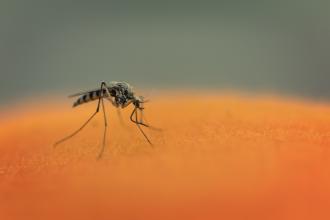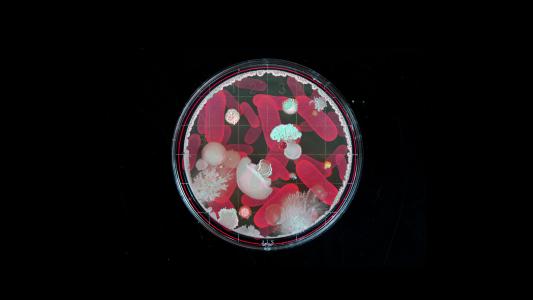The Four Horsemen of the Apocalypse are War, Death, Famine, and Pestilence — what Revelation doesn’t tell you is that this last rider sits atop not a horse but a mosquito.
The bane of your summer evenings is, in much of the world, a dangerous disease vector; mosquito borne diseases kill hundreds of thousands (and infect hundreds of millions) every year. Mosquitoes carry such dreaded diseases as malaria, yellow fever, West Nile, Zika, dengue (aka “breakbone fever,” a very metal nickname it earns with excruciating joint and muscle pain), and the threat du jour, Eastern Equine Encephalitis (EEE).
Environmental concerns have curtailed the use of DDT, and pests — much like bacteria — have been developing resistance to other pesticides.
Mosquito control is one of the major advancements in public health — and it helped eradicate malaria from the United States and most developed countries — but progress against malaria has recently stalled. Environmental concerns have curtailed the use of DDT, and pests — much like bacteria — have been developing resistance to other pesticides. This unfortunate combination makes finding non-chemical means of preventing mosquito bites crucial.
Fortunately, according to Futrity, a team of engineers at Brown may have found a new way to stop the vectors. Even better, it may blunt their desire for your blood at all, a potentially effective form of mosquito repellent relying on material instead of pesticides.
Making Mosquito Proof Clothing
“Mosquitoes are important vectors for disease all over the world, and there’s a lot of interest in non-chemical mosquito bite protection,” says Robert Hurt, an engineering professor at Brown.
A team of engineers at Brown may have found a new way to stop the vectors. Even better, it may blunt their desire for your blood at all.
Hurt is the lead author on a study published this September in the Proceedings of the National Academy of Science, where his team found that layers of a material called graphene not only physically stop a mosquito’s proboscis (the syringe-like appendage it uses to stab through your skin) but may also limit their urge to bite.
What is graphene? Graphene is an incredibly tough, thin layer of graphite (the familiar material you know from pencils). The material is odd: only one atom thick, it still retains incredible strength. Hurt’s team used graphene oxide, a derivative thick enough to be used in everyday applications, to physically prevent mosquito bites.
A handful of volunteers unafraid of being bit inserted their arms into a container of lab-grown bloodsuckers assuredly free of mosquito borne diseases. An exposed patch of skin was either left naked, shielded only by cheesecloth, or by graphene oxide wrapped in cheesecloth; the team then compared the number of bites on each.
Hurt’s team used graphene oxide, a derivative thick enough to be used in everyday applications, to physically prevent mosquito bites. Study participants with a graphene oxide layer did not receive a single bite: in fact, they were not even landed upon.
Bare skin and cheesecloth were readily devoured. But participants with the graphene oxide layer did not receive a single bite: in fact, they were not even landed upon. The Brown team suspects that the graphene oxide is not only a physical barrier but a chemical one, providing two pronged mosquito protection. When human sweat was dabbed onto the outside of the graphene oxide, the mosquitoes once again showed interest.
The Cold Water (Literally)
The potential benefits of graphene oxide clothing are eliminated when the material is wet. Considering that mosquitoes only spawn near water and are usually found in tropical climes, this is no small hurdle. The researchers found another form of graphene oxide stayed strong when saturated, but carried its own, shall we say, moisture issue: it cannot be sweat through. Again, not ideal for tropical mosquito proof graphene clothing.
If they succeed, the material may make for a versatile, wearable, workable, chemical-free mosquito protection.
Hurt’s team is currently working on a more stable version of the graphene oxide that will stay strong and allow sweating. If they succeed, the material may make for a versatile, wearable, workable, chemical-free mosquito protection. In the meantime, Pestilence will continue to add to its body count, with people in developing nations most often in its crosshairs.






